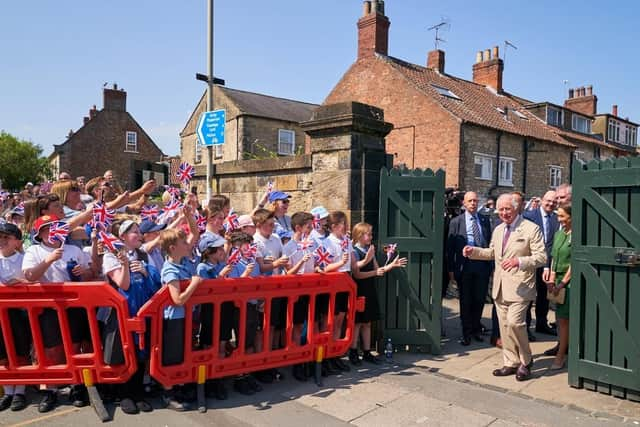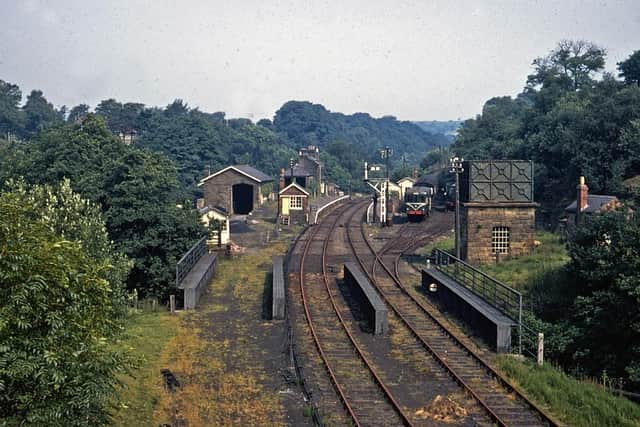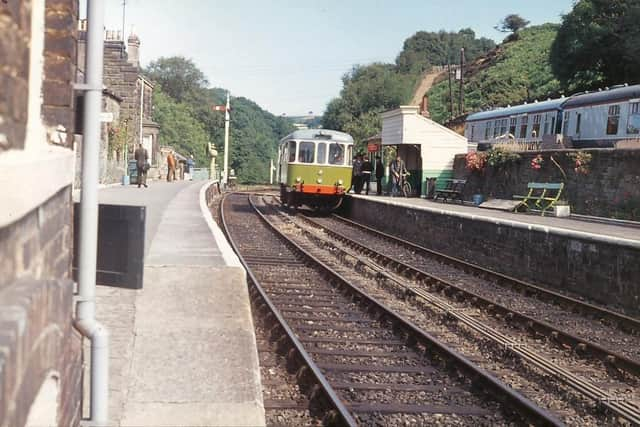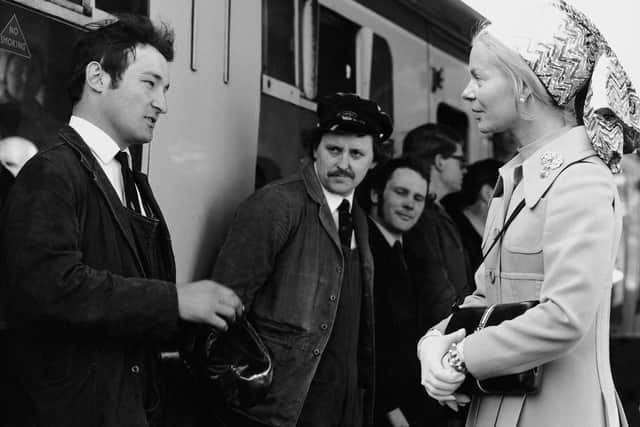North Yorkshire Moors Railway 50th anniversary: Yorkshire railway continues to see an increase of tourists from all over the world travelling to Goathland due to its appearances in Heartbeat despite the ITV show ending 13 years ago
and live on Freeview channel 276
While the reopening of Goathland Railway took place in 1973, the railway dates further back to the 19th century when the Whitby-Pickering line was opened in 1836. It went through various changes of ownership before it was owned by the North Yorkshire Moors National Railway Society, which was formed in 1969.
A lot of work was done before the railway was reopened including bringing in locomotives, carriage, signalling and making alterations to the track. Originally it was a double line railway between Grosmont and Levisham before just one of the two tracks was bought, which had been out of use for around eight years.
Advertisement
Hide AdAdvertisement
Hide AdStation master at Goathland Railway, John Bruce, has been working as a volunteer at the railway since 1969 ahead of its reopening. The official reopening of the railway was on May 1, 1973, by the Duchess of Kent. Mr Bruce was signalling on that day and when they ran a commemorative train this year for its anniversary, he was signalling again and so has seen the railway evolve over the last 50 years.


“It is massive compared to anything that the founders or the early volunteers and staff would have envisaged,” he told The Yorkshire Post.
“Yes, it has grown gradually and sometimes it needs someone from the outside to say ‘I remember what this was like 40 years ago’, because we’ve seen it happen in stages but it has changed massively: the numbers we carry, the safety requirements, industry-wide, both the national rail network and the heritage railway have had to move with the times and with increased focus on safety and regulation.
“The trains have gotten bigger, the two locomotives that we opened with were relatively smaller than those used today, longer trains, more frequent train services and our initial midweek offering was very much three trains a day.
Advertisement
Hide AdAdvertisement
Hide Ad“We are now busier during the week in the summer than we are at weekends. The whole market has changed; earlier retirement and the silver pound have made massive differences to us now.


“It’s absolutely essential to recreate and demonstrate the heritage and our history. The railways were part of the Industrial Revolution, they brought massive changes to the area even to the development of farming by providing products, bringing materials in for farming, improving the fields, movement of livestocks and of course visitors.
“The railway was the catalyst for Goathland becoming a tourist destination at the turn of the century.
“There’s a massive educational experience in teaching future generations the story of how things are changing and how things have evolved and how the railways are operated.”
Advertisement
Hide AdAdvertisement
Hide AdEven though the ITV3 soap Heartbeat had stopped filming in September 2010, Goathland Railway and its village are continuing to see a rise in tourists from all over the world.


Its tourist population is also influenced by its appearance in the 2001 film Harry Potter and the Philosopher’s Stone.
“Goathland is a prime destination on the railway for visitors who can either come to Goathland for the day, walk around the area, walk to Grosmont, catch the train back, or break the journey as part of their trip to Whitby,” Mr Bruce said.
“Goathland has always been a popular tourist destination, which inevitably was helped by 17 years of filming Heartbeat and also the first Harry Potter film.
Advertisement
Hide AdAdvertisement
Hide Ad“The biggest impact, certainly around Goathland, is Heartbeat. It still is. Despite the fact that it has been a number of years since they have stopped filming.


“We get visitors from the UK but also from as far away as Australia and New Zealand, Scandinavian countries, it’s very popular there, especially [since] Heartbeat is still seen all over the world and repeated on a daily basis.
“If you go on ITV3 you’ll find it’s screened every afternoon. So there are still a lot of people coming to Goathland for that.
“We see a lot of youngsters dressed up in Harry Potter [costumes] to see where it was filmed.
Advertisement
Hide AdAdvertisement
Hide Ad“When Harry arrived for the first time to go to school at Hogwarts, he arrived at Hogsmeade Station which was in Goathland. He got greeted by Hagrid on the platform.
“More recently, though it’s not so obvious, we’ve been featured in the latest Tom Cruise film Mission Impossible, this was filmed not in Goathland but Levisham.”
It has taken £10 million a year to keep the railway operating over the years and the Lottery Heritage Fund helped with renewal of bridges, new learning facilities at Goathland and funding educational projects.
However, Mr Bruce explains why it is important to keep the railway running and what he hopes for the future.
Advertisement
Hide AdAdvertisement
Hide Ad“We are one of the major tourist attractions in Yorkshire, particularly in North Yorkshire,” he said.
“There have been various figures over the years, about 10 years ago we were worth [around] £38 million to the annual economy of the area.
“[The railway benefits] education to local schools, communities and fundamentally we do bring an awful lot of visitors in for guest houses and hotels around the area.
“What I hope for the future is that we continue a railway that does educate the public, children and adults, on railway heritage.
Advertisement
Hide AdAdvertisement
Hide Ad“There are massive challenges obtaining coal, there are environmental concerns, meaning that coal is less easily available and, as we are already finding, much more costly.
“Maintaining the railways is an ever-increasing financial burden, there’s a lot of investment that goes on and providing modern day facilities for our passengers and visitors.
“We can’t survive now on the nostalgia of those who remembered the steam locomotives in the late sixties, we’ve got a very different audience now; it’s no longer a nostalgia kick.
“It’s changed, many of the original volunteers on the railway were those enthusiasts who remembered the end of steam on British Railways and wanted to preserve it. We now need to inspire [younger generations], get them interested and get them involved.”
